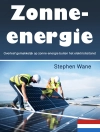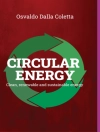Human Centric Integrative Lighting
Detailed presentation of the technical and non-technical aspects of modern lighting and its effect on humans
Human Centric Integrative Lighting provides a highly comprehensive overview of the subject, also referred to as human-centered indoor lighting technology; taking a practice-oriented approach, scientific findings in the field are condensed into models that can be directly used by developers.
Written by leading scientists in the field of lighting technology, Human Centric Integrative Lighting includes detailed information on:
- Fundamentals of lighting technology as it interacts with human perception and the current state of interior lighting today
- Basic principles of human centric integrative lighting and its various aspects, such as visual performance, color quality, emotional impact, and correlation of relevant parameters
- Comprehensive lighting quality models and subsequently derived recommendations for the practical implementation of concepts
- Relevant research findings from journals, patent specifications, and standards to provide a unified outlook on the field
Providing a comprehensive overview of the current state of development in the field, Human Centric Integrative Lighting discusses validated physiological and psychological perceptual models on which manufacturers of lighting products and suppliers of lighting technology solutions can base key design and development decisions.
lighting products; lighting technology solutions; lighting design; lighting development; human-centered indoor lighting technology; lighting color quality; lighting principles; lighting emotional impact; lighting quality; lighting research
Inhaltsverzeichnis
Preface xv
Acknowledgements xvii
1 Introduction and Motivations 1
1.1 Introduction: A Historical Review. Current Issues 1
References 5
2 Fundamentals of Lighting Technology – Basic Visual and Non-visual Aspects 7
2.1 The Human Visual System. Visual and Non-visual Signal Processing 7
2.2 Photometric and Colorimetric Quantities 12
2.2.1 Lighting Technology and Colorimetry 12
2.2.2 Colorimetry: CIE Tristimulus Values and CIE Chromaticity Diagram 13
2.2.3 Colour Appearance, Colour Matching, Colour Spaces, and Colour Difference Formulas 16
2.2.4 The CIECAM02 Colour Appearance Model 18
2.2.5 CAM02-UCS Colour Space 21
2.3 Basics of the Non-visual Aspects 21
2.3.1 Melatonin Suppression at Night 21
2.3.2 Modelling Melatonin Suppression at Night with the Circadian Stimulus (CS) and the Melanopic Action Factor 23
2.3.3 Spectral Sensitivity Functions According to the CIE 25
2.3.4 Correlations Among Circadian Stimulus CS, Melanopic Illuminance, and D65-Equivalent Illuminance 27
2.3.5 Recommendations of Necessary Melanopic EDI (m EDI) Levels for Optimum Sleep and Daytime Environments and Summary of this Chapter 28
References 29
3 Basic Principles of Human-Centric Lighting and Integrative Lighting 33
3.1 Basic Questions, General Aspects 33
3.2 Input Variables – A Systematic Approach 35
3.3 Brain Processing for the Formation of Subjective and Objective Behavioural Variables 38
3.3.1 Visual Processing Systems 38
3.3.1.1 Horizontal Cells of Bipolar Cell Layer 39
3.3.1.2 Ganglion Layer 40
3.3.1.3 The Visual Pathway 41
3.3.1.4 Overall Network Structure of the Visual System: An Overview 42
3.3.2 Processing Centres and Transmission Pathways for Non-visual Light Effects 43
3.3.2.1 Light Effects on Mood and Learning 46
3.3.2.2 General Light Effects on Cognition, Emotion, and Alertness 47
3.3.2.3 Wavelength Dependence of Brain Activities on Light Exposure 48
3.4 ‘Timing System’, Circadian Rhythm, and Sleep Behaviour 48
3.4.1 Questions 48
3.4.2 Timing System: Entrainment, Timing Role 49
3.4.3 PRC – Function, Phase Shift 50
3.4.4 Chronotypes, Sleep Behaviour 51
3.5 Output Variables of the Visual and Non-visual Brain Processing Apparatus: A Systematics 52
3.6 Basic Aspects of Human-Centric Lighting/Integrative Lighting 54
3.7 Tools and Methods for Determining the Subjectively and Objectively Measurable Lighting Effects 57
3.7.1 Questionnaires for Comprehensive Subjective Determination of Indoor Lighting Quality 57
3.7.2 Questionnaires on Sleep Behaviour, Sleepiness, and Alertness: The Subjective Basis 58
3.7.3 Objective Methods and Tools 59
References 60
3.a Appendix A 63
4 Visual Performance–Work Performance 67
4.1 Status of Standardisation for Interior Lighting Using the Example of Din En 12464 67
4.2 Visual Performance 71
4.2.1 Definition and Influencing Factors 71
4.2.2 Rea’s RVP Model, 1991 74
4.2.2.1 Experiments and Results from 1986 74
4.2.2.2 Experiments and Results from 1988 and Modelling from 1991 76
4.2.3 The Model of Kokoschka on the Data Basis of Weston 77
4.3 Work Performance 80
4.3.1 Assignment of Work Performance Aspects 80
4.3.2 Model for Stress Regulation Under Poor Lighting 82
4.3.3 Influence of Lighting Level on Mental Work 83
4.3.3.1 The Experiments of Boyce 84
4.3.3.2 The Experiments of Lindner 86
4.3.4 Influence of Lighting Levels on Work Performance in Industrial Workplaces 88
4.3.4.1 Literature Review Until 1971 88
4.3.4.2 Lindner’s Experiments in 1976 90
4.3.5 Summary of the Significance of the Visual Performance and Work Performance Results – Preliminary Consequences for Indoor Lighting 91
References 92
5 Modern Aspects of Brightness and Visual Clarity in the Context of Light Quality and Visual Performance 95
5.1 Introduction 95
5.2 Experimental Method of the Subjective Study 100
5.3 Modelling Brightness and Visual Clarity 102
5.4 Summary 107
References 108
6 Colour Quality and Psychophysical–Emotional Aspects, Laboratory Experiments 111
6.1 Introduction 111
6.2 Preferred Horizontal Illuminance Levels 112
6.3 Preferred Luminance Levels on the Wall for a Computer Monitor 114
6.3.1 Introduction 114
6.3.2 Experimental Method 115
6.3.2.1 Test Series 1: Determining the Most Comfortable Display Brightness at a Constant, Typical Wall Luminance 116
6.3.2.2 Test Series 2: Determining the Most Pleasant Luminance and Colour Temperature on the Wall with Constant Display Luminance 118
6.3.3 Evaluation of the Results 119
6.3.4 Summary 121
6.4 Preferred Colour Temperatures 122
6.4.1 Introduction 122
6.4.2 Experimental Method 123
6.4.3 Results and Discussion 127
6.5 Preferred Ranges of Colour Temperatures and Illuminances 129
6.5.1 The Nature of Illuminance and Colour Temperature 129
6.5.2 Illuminance and Colour Temperature in the Literature 130
6.5.3 Visual Experiments on the Combined Effect of Colour Temperature and Illuminance 132
6.5.4 Results: Combined Effect of Colour Temperature and Illuminance 134
6.5.5 Dependence of Preferred Colour Temperature and Illuminance on Age and Gender for Activation and Relaxation 135
6.6 Preferred White Chromaticities 137
6.6.1 Introduction 137
6.6.2 Experimental Method 139
6.6.3 Results 139
6.7 Colour Quality 140
6.7.1 Perceptual Aspects of Colour Quality 141
6.7.1.1 Naturalness, Colour Fidelity (Colour Rendering) 141
6.7.1.2 Vividness 143
6.7.1.3 Chromatic Lightness (Brilliance) 143
6.7.1.4 Colour Preference 144
6.7.1.5 Memory Colours 144
6.7.2 Modelling Colour Preference, Naturalness, and Vividness 146
6.7.2.1 Modelling of Colour Preference, Naturalness, and Vividness at 750 lx 146
6.7.2.2 Modelling Colour Preference at 2000 lx. Comparison of Colour Preference Between 750 and 2000 lx 149
6.7.3 Consideration of Red Object Colours in the Colour Preference Model 150
6.8 Colour Preference for Skin Tone Lighting 153
6.8.1 Introduction 153
6.8.2 Method of the Colour Preference Experiment for Skin Tone Illumination 154
6.8.2.1 Spectral Measurement of Skin Tones 154
6.8.2.2 Characterisation of the Light Sources Used 156
6.8.3 Results of Subjective Scaling of Colour Preference for Skin Tone. Optimal Saturation Levels 159
6.9 Colour-Rendering Indices and Their Semantic Interpretation 162
6.9.1 Introduction 162
6.9.2 Methodology of the Experiment on the Semantic Interpretation of the Colour-Rendering Indices 162
6.9.3 Results of the Experiment on the Semantic Interpretation of the Colour-Rendering Indices 164
6.10 Summary: Preliminary Consequences for Indoor Lighting 166
References 166
7 New Light-Quality Models from Laboratory Experiments and their Validation in Field Trials 171
7.1 Introduction 171
7.2 Input and Output Parameters of the Light-Quality Models 173
7.2.1 Input Parameters 173
7.2.2 Output Parameters 173
7.3 Experimental Set-Ups for the Light-Quality Models 174
7.4 Equations of the Light-Quality Models 178
7.4.1 Brightness 178
7.4.2 Visual Clarity (VC) 179
7.4.3 Colour Preference (CP) 180
7.4.4 Scene Preference (SP) 183
7.5 Modelling with the Circadian Stimulus (CS) 184
7.5.1 Calculation Method 186
7.5.2 Brightness 186
7.5.3 Visual Clarity (VC) 187
7.5.4 Colour Preference (CP) 187
7.5.5 Scene Preference (SP) 188
7.5.6 Visualisation of the VC, CP, and SP Models in Contour Diagrams 188
7.6 Validation of the Light-Quality Models (in Section 7.4) in Three Museums in Japan 191
7.7 Summary 192
References 194
8 Correlation Analysis of HCL Parameters and Consequences for the Measurement Methods of Non-visual Effects 197
8.1 General Consideration of the Correlation of the Parameters for Visual Performance, Colour Quality, and Non-visual Effects 197
8.1.1 Introduction 197
8.1.2 Evaluation of the Colour-Rendering Indices 202
8.1.3 Assessments of the Brightness Parameters 203
8.1.4 Melanopic Effect and Colour Rendering 205
8.1.5 Correlation Between Further Parameters of Visual Performance, Colour Quality, and Non-visual Effects 206
8.2 Structure and Categories of the Input Parameters of the HCL System 210
References 214
9 Psychophysical–Emotional Aspects – Visual Comfort and Non-visual Effects 217
9.1 Psychological–Emotional Aspects of the Effect of Light 217
9.1.1 Introduction 217
9.1.2 Psychological Effect of the Variable Lighting Situations, Spatial Effects 220
9.1.2.1 Field Trial 221
9.1.2.2 Laboratory Experiment 223
9.2 Space Impression, Space Brightness, and Visual Field Luminance 227
9.3 Visual Comfort: Flicker and Stroboscopic Effects 229
9.3.1 Pulse Width Modulation and Constant Current Control 229
9.3.1.1 Pulse Width Modulation (PWM) 229
9.3.1.2 Constant Current Regulation (CCR) 230
9.3.2 Flicker and Stroboscopic Effects 230
9.3.3 State of Research 231
9.3.4 Investigation 233
9.3.4.1 Settings 233
9.3.4.2 Parameters Investigated 234
9.3.4.3 Experimental Procedure 235
9.3.5 Results 236
9.3.5.1 Mean Subjective Values 237
9.3.6 Conclusion 240
9.4 Non-visual Light Effects During the Night Hours 240
9.4.1 Introduction 241
9.4.2 Light Effects in Night Hours with Polychromatic White Light 242
9.4.2.1 Results 243
9.4.3 Light Effects in Nocturnal Hours with Quasi-monochromatic Light 246
9.4.4 Formation of a Metric to Characterise Time-Dependent Melatonin Suppression 249
9.4.5 Determining the Potential Causes of Melatonin Suppression in Nocturnal Hours 253
9.4.6 Lighting Aspects for Shift Work 254
9.5 Psychological and Health Aspects of Daylight 261
9.5.1 Psychological Aspects 261
9.5.2 Health Aspects of Daylight 263
9.5.3 Quantitative Characteristics of Daylight and Electric Light – A Comparison 265
9.6 Influences of Light Intensity and Timing of Light Exposure on Sleep Behaviour 271
9.7 Light Effects on Alertness – Literature Analysis of Various Publications 275
9.7.1 Alertness in the Evening and Night Hours 275
9.7.2 Alertness in the Daytime 276
9.8 Results of the Effect of Light on Alertness and Sleepiness During the Early Shift in an Industrial Company 281
9.8.1 Results of the Data Evaluation 283
9.8.2 Summary and Discussion 284
References 284
10 Practical HCL Light Measurement Technology Indoors and Outdoors 291
10.1 Introduction 291
10.2 Hypotheses and Questions for HCL Light Measurement Technology 293
10.3 Light Measurement Aspects 296
10.3.1 Size of the Viewing Field 296
10.3.2 Current Definitions of Circadian-Effective Irradiance 297
10.3.2.1 DIN Evaluation Procedure 298
10.3.2.2 Procedure according to M. Rea and Figuiero 300
10.3.2.3 Use of the Definitions for the Metrics MDER and MEDI according to CIE, Which Have Been Described in Chapter 2 (Section 2.2.3) of this Book 302
10.3.3 Calculation of the Circadian Stimulus CS from Vertical Illuminance and Chromaticity Coordinate z 302
10.3.4 Computation of the Circadian Stimulus CS from Vertical Illuminance and Correlated Colour Temperature CCT 305
10.4 Circadian-Effective Irradiation Outdoors and Indoors by Integral Field Measurements 307
10.4.1 Field Measurements in Winter 309
10.4.2 Field Measurements on a Summer Day 310
10.4.3 Field Measurements on the Evening of an Autumn Day 312
10.5 Daylight Measurement–Spectral Measurement and Practical Approaches 314
10.5.1 Spectral Measurement of Daylight Spectra 314
10.6 HCL – Light Measurements at Office Workplaces 320
10.6.1 Measured Variables and Measurement Technology 320
10.6.2 Measurement Set-Up 321
10.6.3 The Rooms in which the Measurement Took Place 322
10.6.4 Measurement Results at Different Office Workplaces 324
10.7 Calculation of the Metrics MDER and MEDI from Vertical Illuminance and Chromaticity Coordinate z 326
10.7.1 Definition of MDER and MEDI According to CIE-Publication 326
10.7.2 Mathematical Transformation for Calculation of MEDI and MDER 328
References 331
11 Technological Aspects of Human Centric Lighting in Buildings 335
11.1 Introduction to the Topic ‘Smart Lighting’ 335
11.2 Technical Principles of Smart Lighting 340
11.3 Cloud Software Structure and Use Cases 349
11.4 Light Control and Spectral Optimisation for High-Quality and Healthy Light 353
11.4.1 Stages of the Realisation Possibilities of the Luminaires for HCL Lighting Technology 353
11.4.2 Levels 1 and 2 with Constant Colour Temperature 353
11.4.2.1 Basic Data of Circadian Effectiveness 353
11.4.2.2 Previous Technologies for Generating White LED Light 355
11.4.2.3 Newer Technologies for the Generation of White LED Light with Only One Colour Temperature 356
11.4.3 Levels 3 and 4 (Figure 11.17) with Variable Colour Temperature and Variable Illuminance 361
11.4.4 Level 5 (Figure 11.17) with Variable Colour Temperature, Variable Illuminance, and High Colour Quality 364
11.4.5 Level 6 with Variable Colour Temperature, Variable Illuminance, and Daylight Consideration 365
11.4.5.1 Introduction 365
11.4.5.2 Variation of Daylight and Consequences for Indoor Lighting – Result of a Measurement 366
11.4.5.3 Approaches to Considering Daylight Components in Interior Space 368
11.5 Measurement of Melanopic-Equivalent Daylight Illuminance (MEDI) with RGB Colour Sensors 372
11.5.1 Introduction Into the Context 372
11.5.2 RGB Colour Sensors: Characterisation and Signal Transformation 372
11.5.2.1 Characterisation of RGB Colour Sensors 372
11.5.3 Method of Signal Transformation from RGB to XYZ 376
11.5.4 Matrix Transformation in Practice, Verification with an Actual RGB Colour Sensor 377
11.5.5 Measurement of the Non-visual Quantities MEDI and MDER 378
11.5.6 Summary 382
References 384
12 HCL-Oriented Lighting Design: Basic Aspects and Implementation 387
12.1 Classification of HCL-Oriented Lighting Quality Concepts 387
12.1.1 Conceptions and Thought Processes on Lighting Quality Until 2002 387
12.1.1.1 Flynn et al. 388
12.1.1.2 Rowlands and Loe 389
12.1.1.3 Veitch and Newsham 389
12.1.2 Literature Analysis and New Thoughts on Lighting Quality 393
12.1.3 Summary of the Concepts on HCL and Lighting Quality – A Draft Overall Concept 396
12.2 Lighting Design: The Process and the Influencing Factors to Achieve Lighting Quality 397
12.2.1 Goals and Classification of HCL-Oriented Lighting Design 397
12.2.2 Process Steps of HCL-Oriented Lighting Design 399
12.3 Daylight and Daylight Planning 404
12.3.1 Introduction 404
12.3.2 Daylight from a Lighting Design Perspective – Daylight Design in the Context of Standardisation 405
12.3.3 Daylight Planning for Non-visual Effects 407
12.3.4 Some Data on Daylighting Effects 408
12.4 Specification of HCL Lighting Systems for Daytime – Draft Recommendation 409
12.4.1 Introduction 409
12.4.2 Illumination Level, Circadian-Effective Illuminance Levels 410
12.5 Dynamic Lighting, Control Curves 418
12.6 Lighting for Users with Higher Lighting Requirements 425
12.6.1 Vision in Old Age – Some Aspects 426
12.6.2 Lighting for Elderly People’s Homes and People Suffering from Dementia 431
12.6.3 Proposal for Lighting Design for Elderly People’s Homes and Nursing Homes 433
References 436
13 Numerical Relationship Between Non-visual Metrics and Brightness Metrics – Consequences for the Evaluation of HCL Systems and Facilities 443
13.1 Introduction 443
13.2 Brightness Perception and Modelling 445
13.3 Circadian Stimulus Models CS 2018 and CS 2021 446
13.3.1 The Circadian Stimulus (CS) Models 2005 and 2018 447
13.3.2 The Circadian Stimulus Model 2021 448
13.4 The Formula of Giménez et al. for Nocturnal Melatonin Suppression 450
13.5 Numerical Analysis of the Relationship Between Brightness and Non-visual Metrics 451
13.5.1 Introduction 451
13.5.2 Method of Correlation Analysis 452
13.5.3 Relation Between the Linear Brightness Metrics and the Non-visual-Effect Parameters 452
13.5.4 Relation Between Non-linear Brightness Metrics and Non-visual-Effect Parameters 455
References 457
14 Summary and Outlook 459
14.1 Summary 459
14.2 Outlook 463
Index 465
Über den Autor
Tran Quoc Khanh is University Professor and Head of the Laboratory of Adaptive Lighting Systems and Visual Processing at TU Darmstadt in Darmstadt, Germany. He received his Ph D in Lighting Engineering from the TU Ilmenau, Germany. He received his Degree of Lecture Qualification (Habilitation) from the same university for his in colorimetry and color image processing. He gained industrial experience as a project manager at ARRI Cine Technik in München (Germany). Tran Quoc Khanh has authored and co-authored numerous scientific publications and invented several patents in various fields of lighting technology.
Peter Bodrogi was a Senior Research Fellow at the Laboratory of Adaptive Lighting Systems and Visual Processing at the TU Darmstadt in Darmstadt, Germany. He now works for the ERCO Gmb H in Lüschenscheid, Germany, in the field of lighting engineering. He received his Ph D in Information Technology. He obtained his postdoctoral qualification at the TU Darmstadt for his thesis on the optimization of modern visual technologies. He is co-author of numerous scientific publications and holds patents in the field of self-luminous display technology and lighting technology.
Trinh Quang Vinh is a Senior Research Fellow at the Laboratory of Adaptive Lighting Systems and Visual Processing at TU Darmstadt in Darmstadt, Germany. He received his M.Sc. degree in control engineering. He obtained his Dr.-Ing. degree from TU Darmstadt in 2013. His research topic is the complex mathematical modeling of high-power (phosphor-converted) LEDs, including their electrical, thermal, and optical behavior, as well as their light and color quality. He is co-author of several scientific publications and holds patents in the field of LED lighting technology.












